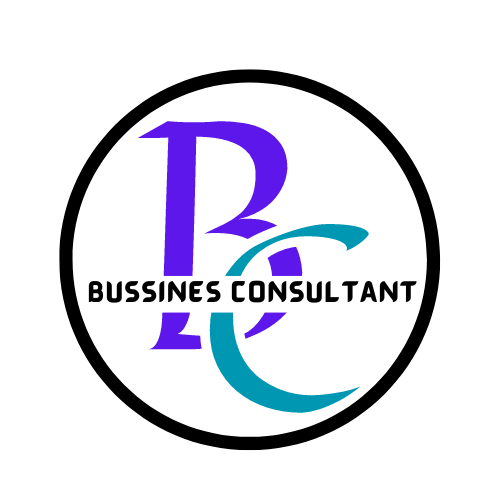Understanding Customer Experience Optimization
Customer Experience optimization (CX) refers the cumulative interactions a has with a brand, from the initial discovery to-purchase support’s about how customers during and after these.
Key Elements of Customer Experience
- Emotional Connection: Happy customers are more likely to return.
- Delivering a uniform experience across all platforms and touchpoints.
- Ease of Interaction: Customers want quick, straightforward solutions.
Importance in Today’s Market
In a world driven by competition, providing a stellar customer experience has become crucial. Companies that prioritize CX can differentiate themselves and create loyal customers who are less likely to switch brands.
Differentiating Between Customer Service and Customer Experience
Customer service is one aspect of CX, primarily dealing with interactions focused on helping customers solve problems. CX, however, encompasses the entire journey, including marketing, sales, and ongoing support.
The Business Impact of Customer Experience
A great CX fosters customer loyalty. When customers feel valued, they’re more likely to stick around, which, in turn, reduces churn rates.
Financial Performance and Growth
Positive experiences often lead to increased sales and higher revenue. Satisfied customers are more prone to make repeat purchases and recommend your business to others.
Brand Reputation and Public Perception
In the age of social media, word spreads quickly. A few bad experiences can tarnish your brand’s image, while excellent CX can enhance it and attract new customers.
Trends Influencing Customer Experience
Technological Advancements
Technology, such as AI and chatbots, can enhance CX by providing 24/7 support and personalized interactions.
Consumer Behavior Shifts
Today’s consumers value transparency and ethical practices. They are more inclined to support businesses that align with their values.
The Rise of Personalization
Customers increasingly expect tailored experiences. Using data to create personalized interactions can set your business apart.

Setting the Foundation: Initial Steps in Business Planning
Importance of a Clear Vision
A clear vision provides direction and purpose, guiding the company’s efforts toward enhancing customer experiences.
Crafting a Mission Statement Aligned with Customer Experience Goals
Your mission statement should reflect your commitment to CX, positioning your business as customer-focused.
Incorporating Values
Values should reflect the importance of CX and include aspects like customer respect and quality service.
Conducting Market Research
Consider surveys, focus groups, and online reviews to gather comprehensive insights.
Analyzing Competitors
Look at what competitors do well and identify gaps in the market that you can fill with your CX initiatives.
Understanding Customer Needs and Preferences
Engagement is key. Speak to your customers and learn what they value most in their interactions with your business.
Identifying Key Performance Indicators (KPIs)
Establish Relevant Metrics
Metrics such as Net Promoter Score (NPS) and Customer Satisfaction Score (CSAT) are essential for gauging CX effectiveness.
Balancing Quantitative and Qualitative Measures
Don’t rely solely on numbers; qualitative feedback can offer valuable insights into customer sentiments.
Setting Target Benchmarks
Define realistic goals based on research and industry standards.

Develop Detailed Customer Experience Strategy
Stages of the Customer Journey
These stages typically include awareness, consideration, purchase, and post-purchase.
Identifying Touch points and Interactions
Map out where and how customers interact with your brand, whether it’s through social media, your website, or customer support.
Using Journey Mapping Tools
Tools like Lucid chart or Miro can help visualize the customer journey effectively. Check here for more business planning strategies.
Crafting Customer Personas
Customer personas help you understand the motivations and needs of your various target groups.
Techniques for Creating Customer Personas
Utilize surveys, interviews, and existing data to create detailed profiles of your ideal customers.
Utilizing Personas to Enhance Targeted Strategies
With detailed personas, you can tailor your marketing strategies and improve how you relate to customers.
Incorporating Feedback Mechanisms
Surveys and feedback forms are great, but consider asking for feedback during personal interactions as well.
Analyzing Feedback for Insights
Take time to assess this feedback carefully – it can shine a light on areas needing improvement.
Implementing Changes Based on Feedback
Act on this feedback to show customers that their experiences matter, fostering loyalty.
Strategies for Customer Experience Initiatives
Employee Engagement and Training
Invest in training staff to prioritize CX, equipping them with the skills to enhance customer interactions.
Leadership’s Role in Cultivating a Customer Focus
Leadership sets the tone; a commitment from the top can inspire the entire organization to focus on customer needs.
Recognizing and Rewarding Customer-oriented Behavior
Create incentives for employees who exemplify customer-centric behavior.
Utilizing Technology in Customer Experience
Research tools that can enhance customer interactions, like CRM systems, to get a 360-degree view of customer journeys.
Integration of Customer Relationship Management (CRM) Systems
A good CRM will help manage customer interactions, track feedback, and analyze data effectively.
Leveraging Data Analytics for Informed Decisions
Use data to understand customer behavior and make adjustments to improve experiences.
Developing Communication Strategies
Ensure your brand’s voice is consistent everywhere, from social media to email communication.
Creating Effective Customer Communication Plans
Well-thought-out communication plans will help engage customers throughout their journey.
Assessing the Impact of Communication on Customer Experience
Regularly review your messaging to see whether it resonates with your audience.
Measuring Success and Continuous Improvement
Setting Up Review Processes
Establish a routine of evaluating customer experience strategies to remain proactive, not reactive.
Analyzing KPIs and Metrics
Review your key metrics and gauge how effectively you’re meeting customer needs.
Revisiting Customer Feedback Regularly
Keeping a close eye on feedback ensures that you’re in tune with your customers’ evolving preferences.
Scaling Successful Strategies
Recognize which strategies work well in supporting customer experience.
Expanding Successful Initiatives Across the Organization
Once identified, implement these winning strategies in different departments to maintain consistency.
Ensuring Consistency Across Different Teams and Departments
Ensure that all teams understand and align with the customer experience goals for harmonious efforts.
Fostering a Culture of Continuous Improvement
Invite your employees to share ideas for enhancing customer interactions.
Staying Informed on Industry Best Practices
Keep an eye on competitors and industry trends to remain ahead.
Committing to Ongoing Learning and Development
Never stop learning; investing in training can pay large dividends in customer satisfaction.
Summary
In the rapidly changing business landscape, effectively crafting a business plan centered around customer experience can yield significant benefits. Remember that understanding customer needs, defining clear strategies, and committing to continuous improvement are vital steps toward optimizing customer experiences. When you focus on delivering exceptional CX, your business will thrive, and that’s how you turn customers into loyal advocates.
A great customer experience fosters loyalty, increases revenue, and enhances your brand’s reputation.
Tools like Lucidchart and Miro can help visualize and analyze customer interactions to streamline processes.




